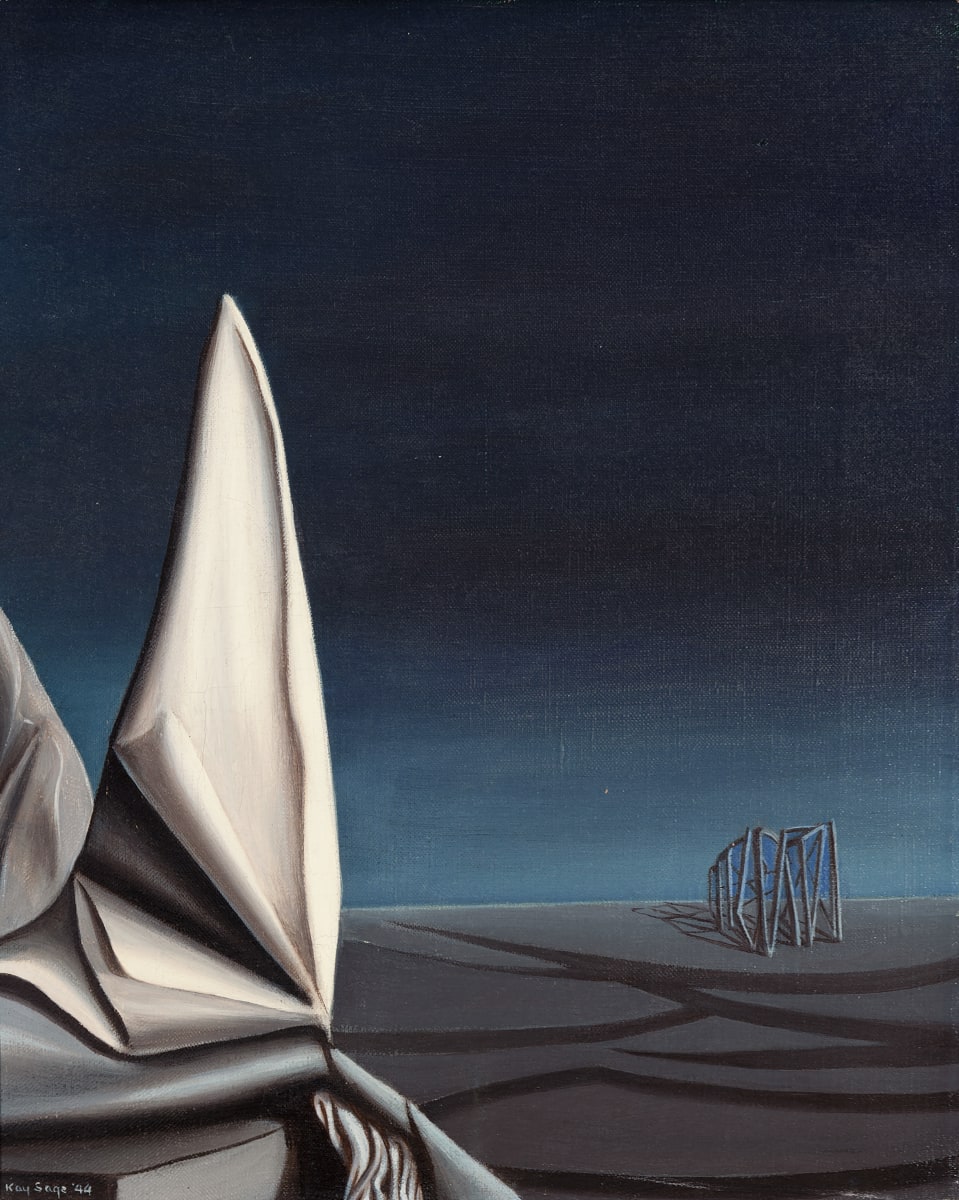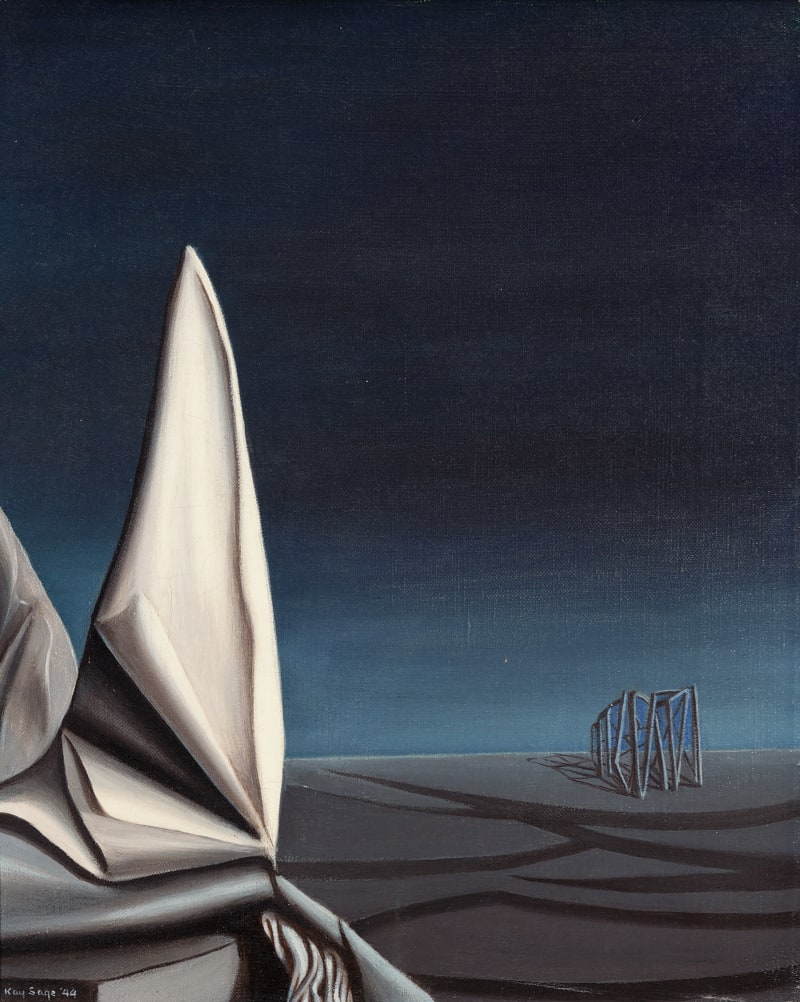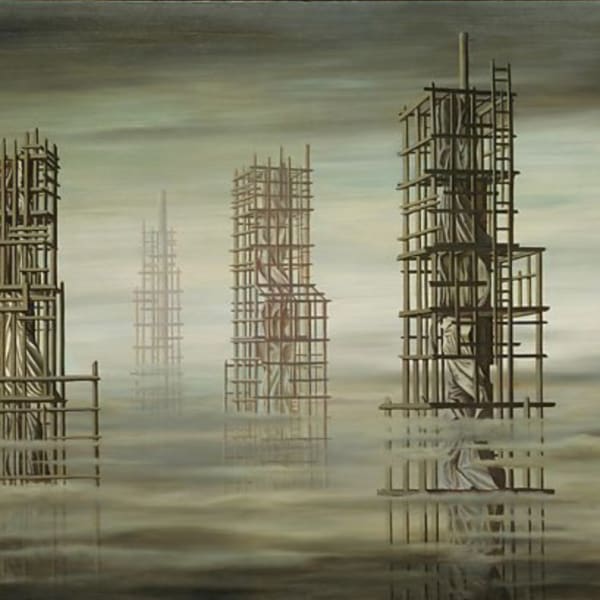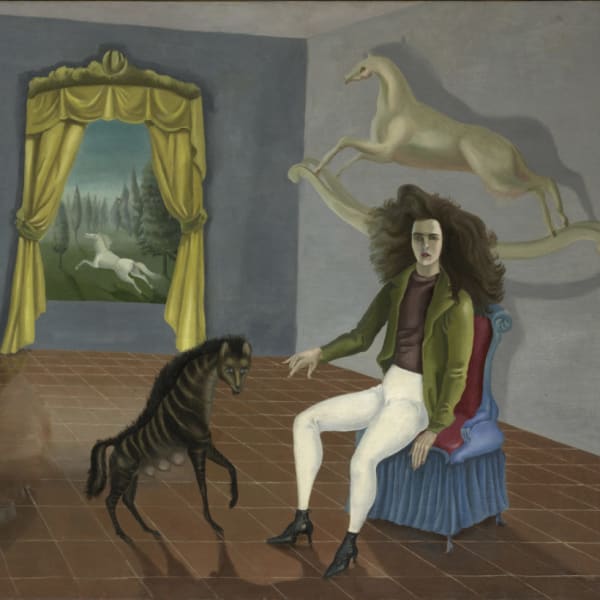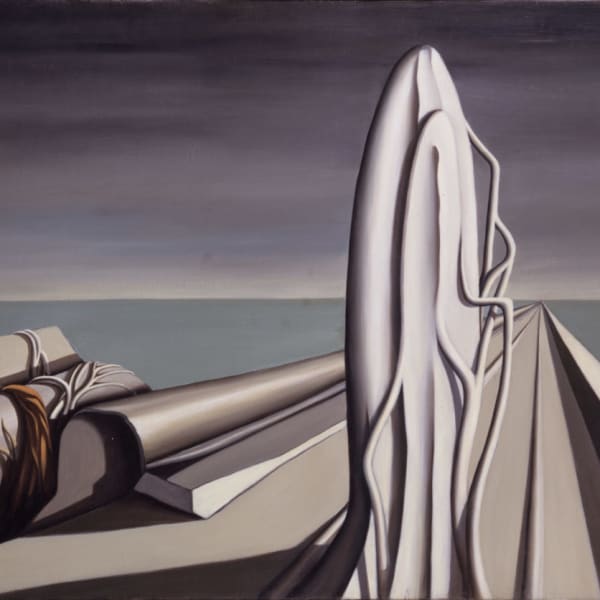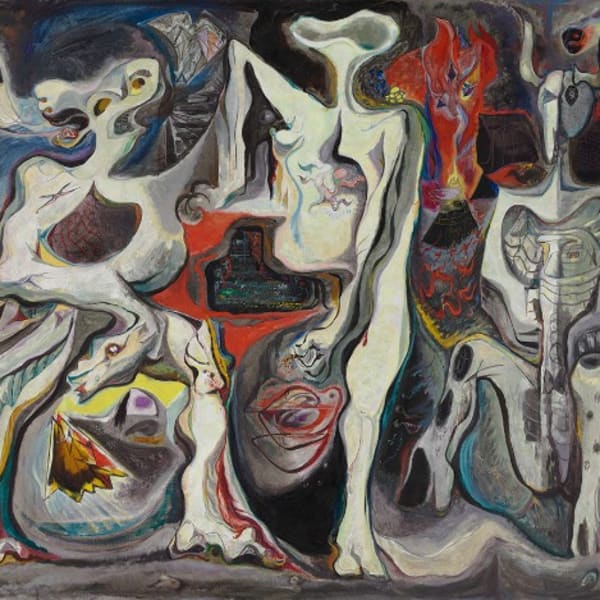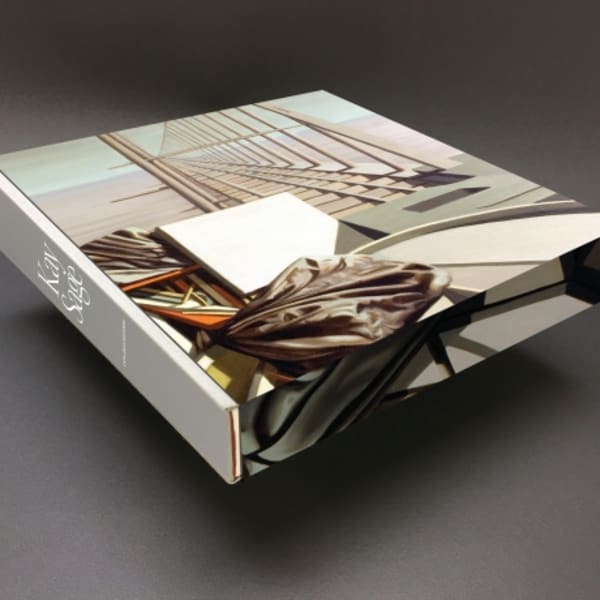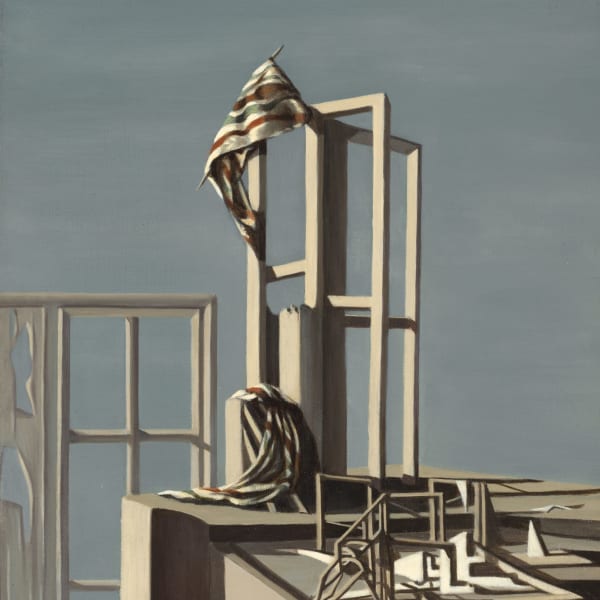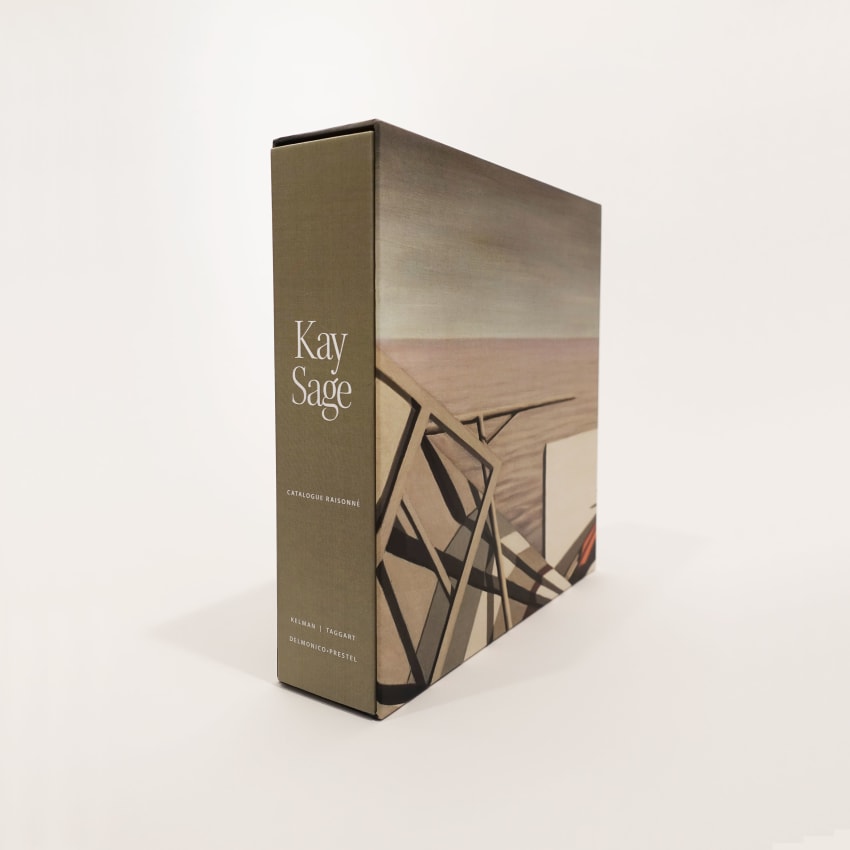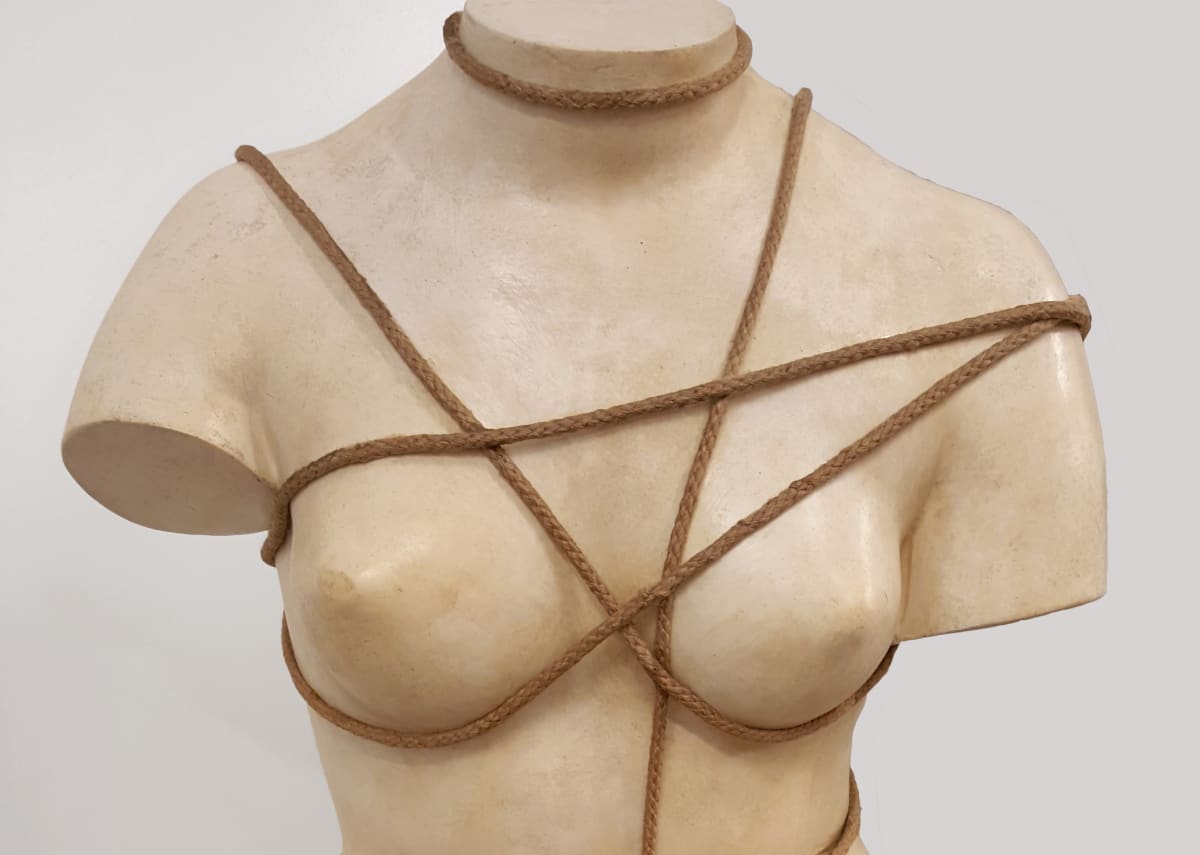
Sage delighted in manipulating the ordinary and indulged in wild alterations of scale, subject matter and narrative.
Born into an affluent family Kay Sage spent most of her youth in Italy. From 1925 to 1935 she was married to the Italian prince Ranieri di San Faustino. Having been introduced to Surrealism after meeting Kurt Seligmann in 1936, Sage divorced Faustino and in 1937 moved to Paris. There she met the Surrealist artist Yves Tanguy and Giorgio de Chirico and became staunchly devoted to Surrealist aesthetics. By 1938 after having met Andre Breton, Sage herself became an intimate of the Surrealist circle and hosted many Surrealist gatherings at her Paris apartment. Situated squarely in the zeitgeist of this creative environment, Sage herself went on to produce a body of archetypal Surrealist imagery that reflected the energy and cerebral nature of Surrealism.
Born into an affluent family Kay Sage spent most of her youth in Italy. From 1925 to 1935 she was married to the Italian prince Ranieri di San Faustino. Having been introduced to Surrealism after meeting Kurt Seligmann in 1936, Sage divorced Faustino and in 1937 moved to Paris. There she met the Surrealist artist Yves Tanguy and Giorgio de Chirico and became staunchly devoted to Surrealist aesthetics. By 1938 after having met Andre Breton, Sage herself became an intimate of the Surrealist circle and hosted many Surrealist gatherings at her Paris apartment. Situated squarely in the zeitgeist of this creative environment, Sage herself went on to produce a body of archetypal Surrealist imagery that reflected the energy and cerebral nature of Surrealism.
Prompted by the war, Sage relocated to the United States in 1940. She had her first solo show in New York that year and married her colleague and friend Tanguy (1900-1955). In 1941, the two artists settled in Woodbury Connecticut, an area that would later attract other Surrealist artists. After the declaration of war, Sage began organizing along with the French Minister of Education in New York, exhibitions from which proceeds were allocated to helping French artist in crisis back in France. She later became instrumental in founding the Society for the Preservation of European Culture, which aided in bringing works by Tanguy, Matta and Gordon Onslow Ford to New York.
Her efforts to support and promote the work of her colleagues, Sage herself was steadfast in her commitment to her own art. Her Surrealist investigations were drawn on personal experience and everyday imagery. Her austere works were executed in draftsman-like style and rendered in muted colors. They are often punctuated with unsettling paradoxes and typically incorporate empty landscapes and ambiguous structures. This ambiguity is uncomfortable and even unsettling. Like many of her contemporaries, Sage delighted in manipulating the ordinary and indulged in wild alterations of scale, subject matter and narrative. She is known to have fused dreamscape imagery with non-naturalistic juxtapositions, the unconscious and the absurd. Sage herself often incorporated draped objects and figures into her oddly precious imagery, which challenged the natural order of things. The world in narrative became unraveled, re-conceived and re-imagined. The very concept of creative freedom had become an almost primal right to Sage.
Sage's life, like her art, was punctuated by a driving intensity and curious narrative. Destroyed after Tanguy’s sudden death of a cerebral brain hemorrhage in 1955, Sage became mentally ill and following a failed attempt at suicide with pills in 1959 she shot herself in the heart in 1963.








